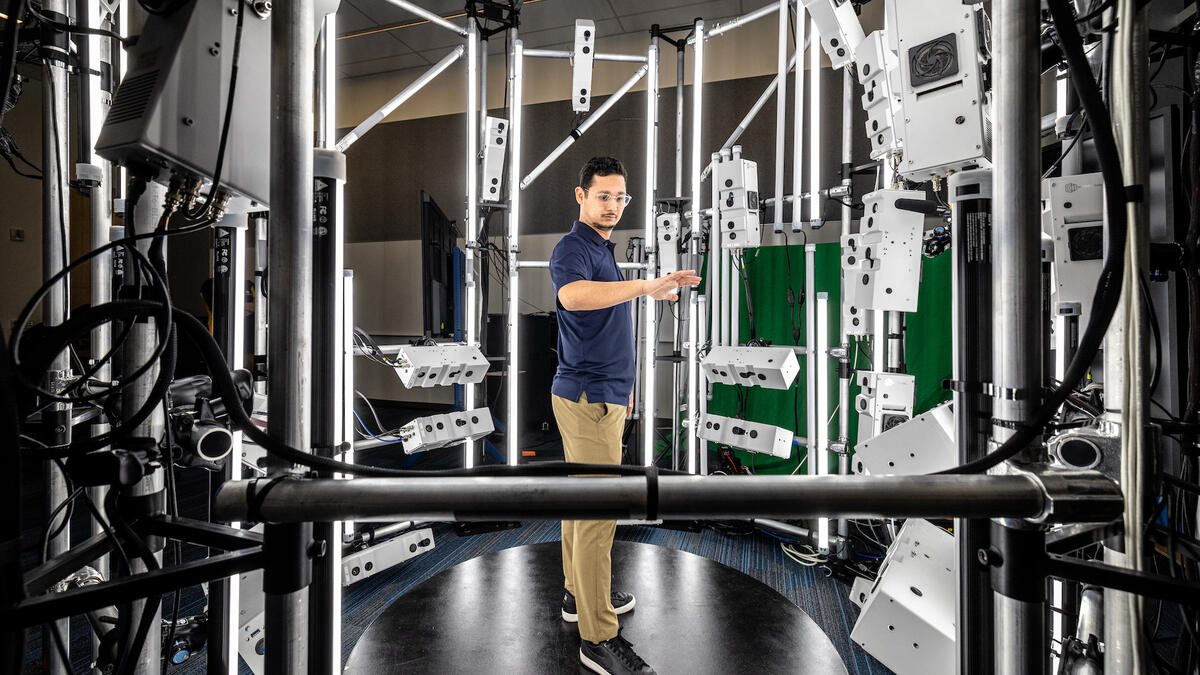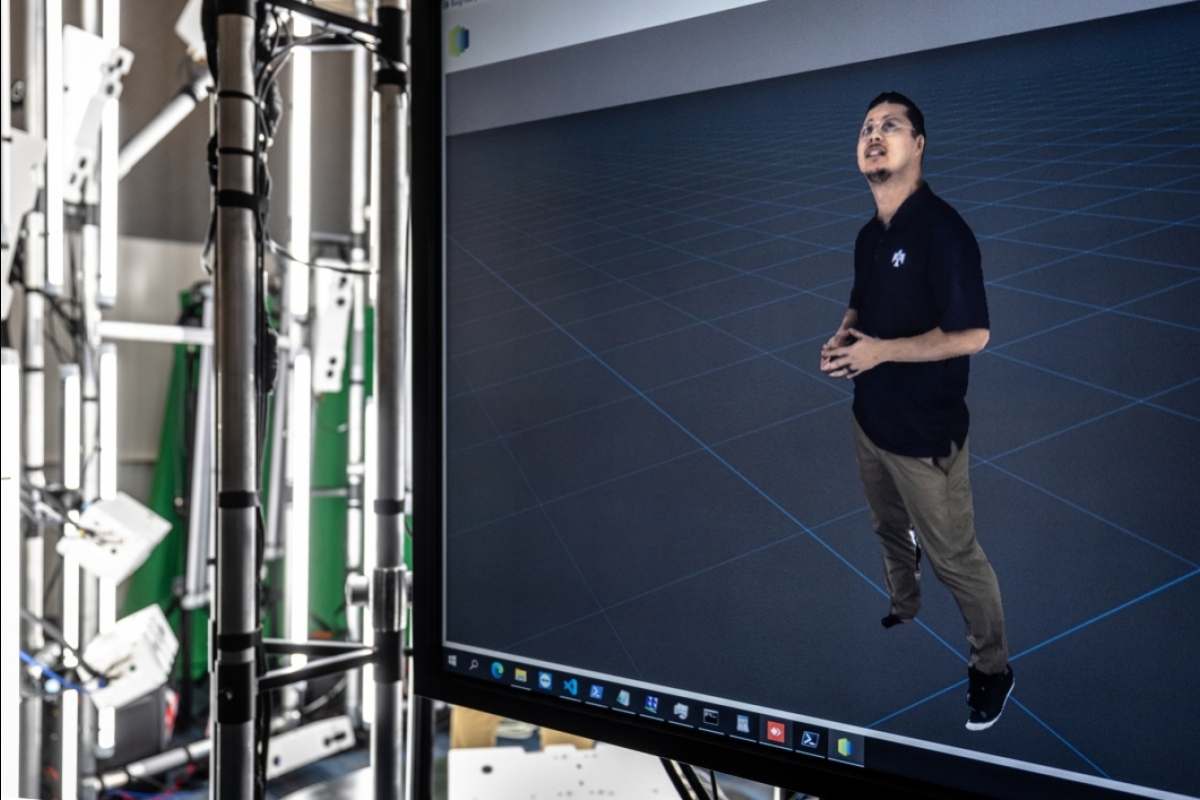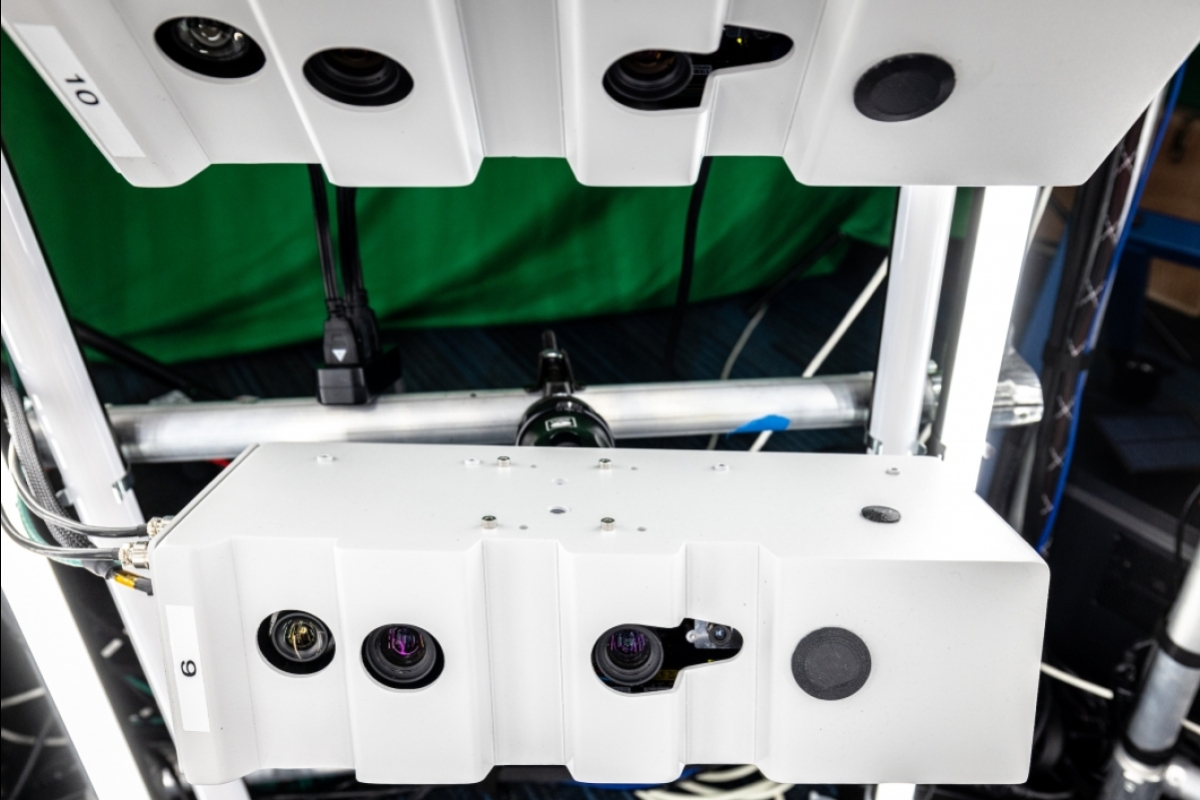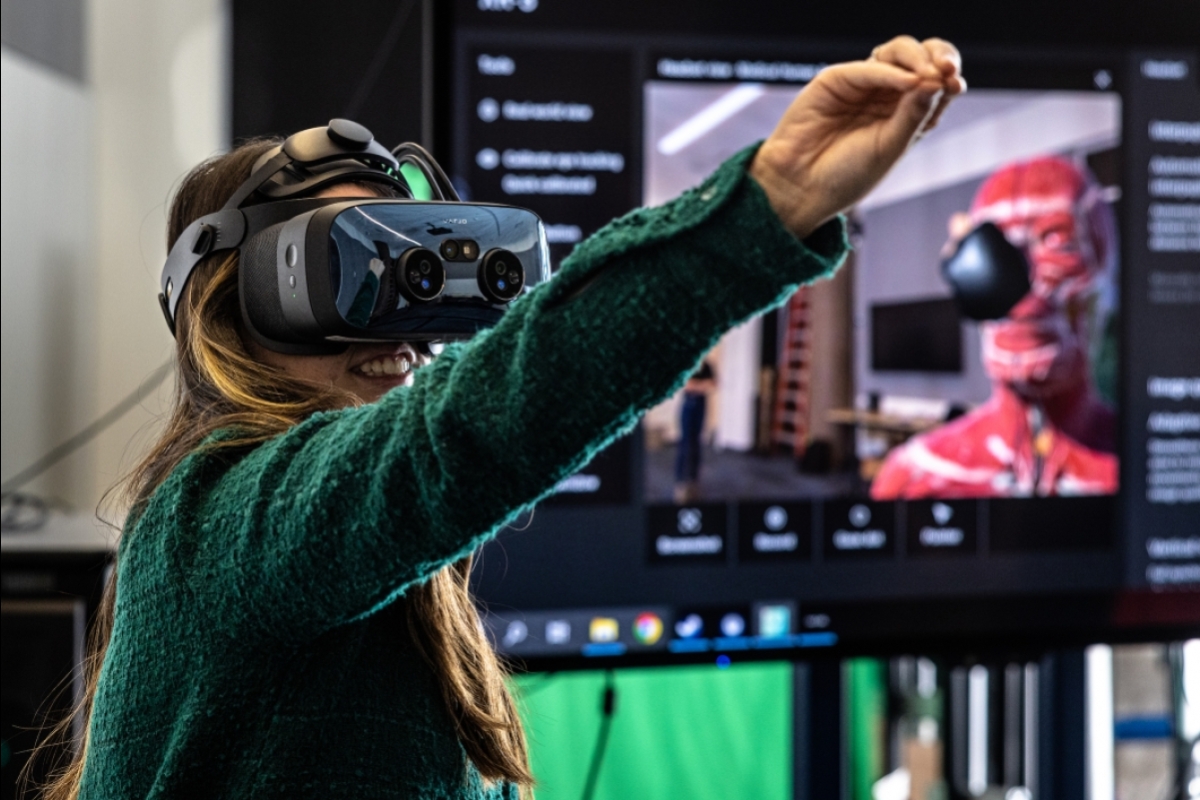Capturing a new reality

Thunderbird art director Esly Diaz stands and moves around in the volumetric capture studio at the Thunderbird School of Global Management on ASU's Downtown Phoenix campus. The studio creates a 360-degree photo or video rendering with 96 cameras to make an avatar that can be placed in an augmented reality environment. Photo by Charlie Leight/ASU News.
Editor’s note: This story is featured in the 2023 year in review.
The same technology that once dazzled an audience at Coachella by delivering them an otherwise impossible performance by the late Tupac Shakur via hologram has now made its way into a legitimate academic setting.
It turns out that the 3D presence of a remote professor or instructor has the same effect to engage an audience of students from across the globe at the Thunderbird School of Global Management at Arizona State University.
The $1.1 million volumetric capture lab — also known as a metaverse lab — on ASU’s Downtown Phoenix campus is showing what is possible when audiences can react to holograms in augmented reality (AR), virtual reality (VR) and on 2D screens.
"Our vision at Thunderbird is to be the most global and digital leadership and management school in the world," says Sanjeev Khagram, director general and dean of Thunderbird and the Foundation Professor of Global Leadership and Global Political Economy. "That means harnessing the 12 key technological transformations of the Fourth Industrial Revolution — AI, IoT, blockchain and especially AR/VR — which have only accelerated since the onset of the pandemic.
"We're shifting the paradigm of in-person and online education from the 'sage on the stage' or someone lecturing from a PowerPoint presentation, and hoping a student, learner, professional can listen for two-and-a-half hours to something that is multi-dimensional, multimedia and engaging."
The volumetric capture lab is so cutting edge and highly technical, that it’s almost hard to describe. It works on many different levels, but here’s an easy way to think of it: It's what Zoom might look like in a “Star Trek” or “Star Wars” movie.
“The lab is a huge investment in terms of time and resources to put together, so the question is how do you leverage this?” says Tomas Bilbao, Thunderbird’s executive director of branding and communications. “We do this by finding cutting-edge ways in which we can enhance the experience for learners around the world. Leveraging all these technologies provides a completely different experience than the traditional in classroom experience for our students, executive clients and lifelong learners.”
Hollywood multimedia studios are starting to build their own volumetric capture labs for large-scale feature films, documentaries, television series, TED Talks, AR apps, VR headsets and future devices that have not been commercialized yet. Paramount Studios recently shot a performance of dancers singing “You’re the One That I Want” from “Grease” for a 3D display and interactive poster. Whenever studios are not shooting, they lease the space to third-party vendors for their endeavors.
While volumetric technology is helping to redefine the entertainment industry, Thunderbird leadership believe it will do the same for education. Thunderbird is also planning for the lab to enable the school to reach an ambitious goal: to educate more than 100 million learners by the start of the next decade.
The Thunderbird in-house studio, which is a 9-foot metal tower with 96 cameras, creates a 360-degree photo or video rendering to make an avatar that can be placed in an AR environment. The process enables students around the world to advance from learning remotely to learning immersively in a three-dimensional space, with the assistance of a computer monitor or VR headsets.
“This is a new pedagogy to do more collaboration in this space. A 3D environment, we've found, is a more meaningful way to teach and reach our students," says Michael Grasso, director of digital initiatives, AV and media for Thunderbird. "The cameras pull terabytes of data down, compresses the image and pieces one together, almost like a puzzle. We then upload into the cloud so the video can be streamed to a phone. We're the first higher education institution in the world to have something like this."
But given the wide variety of disciplines that can be used with the technology, Thunderbird certainly won't be the last. Other subjects could include technology, business, accounting, health care, and music and film production. It could even display an instructor pulling apart a car in a trade class or a teacher explaining human anatomy — all in 3D technology.
Thunderbird art director Esly Diaz has used the technology several times to record himself, including a branding opportunity for the school while he was in Los Angeles at a conference. He was astounded.
“When Dean Khagram sugged the plan to bring a volumetric capture lab to Thunderbird, I thought it was crazy, like something you’d see in the movies. The technology was amazing,” said Diaz, who received a Master of Arts in global affairs and management with a specialization in creative industries from Thunderbird in December.
“It reminded me of the time I saw an app on an iPhone. Everybody kept asking, ‘What’s an app?’ I feel like I’m back at that same time frame. Everybody is now going to be asking, ‘What’s a volumetric scan?’ We’re now at that same point with this technology, and we think it’s going to change education forever.”
More Science and technology

Swarm science: Oral bacteria move in waves to spread and survive
Swarming behaviors appear everywhere in nature — from schools of fish darting in synchrony to locusts sweeping across landscapes in coordinated waves. On winter evenings, just before dusk, hundreds…

Stuck at the airport and we love it #not
Airports don’t bring out the best in people.Ten years ago, Ashwin Rajadesingan was traveling and had that thought. Today, he is an assistant professor at the University of Texas at Austin, but back…

ASU in position to accelerate collaboration between space, semiconductor industries
More than 200 academic, business and government leaders in the space industry converged in Tempe March 19–20 for the third annual Arizona Space Summit, a statewide effort designed to elevate…




